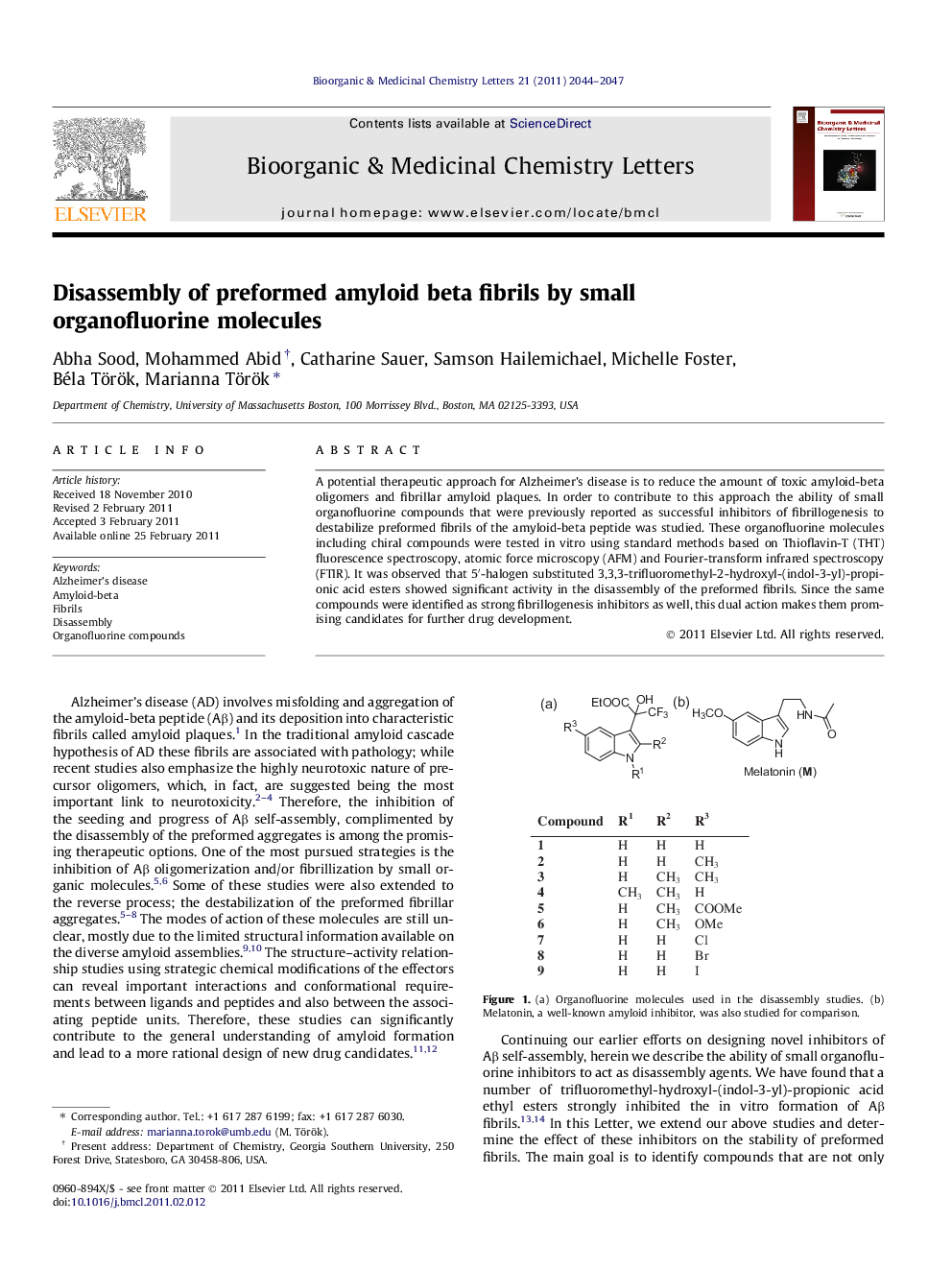| Article ID | Journal | Published Year | Pages | File Type |
|---|---|---|---|---|
| 1370754 | Bioorganic & Medicinal Chemistry Letters | 2011 | 4 Pages |
A potential therapeutic approach for Alzheimer’s disease is to reduce the amount of toxic amyloid-beta oligomers and fibrillar amyloid plaques. In order to contribute to this approach the ability of small organofluorine compounds that were previously reported as successful inhibitors of fibrillogenesis to destabilize preformed fibrils of the amyloid-beta peptide was studied. These organofluorine molecules including chiral compounds were tested in vitro using standard methods based on Thioflavin-T (THT) fluorescence spectroscopy, atomic force microscopy (AFM) and Fourier-transform infrared spectroscopy (FTIR). It was observed that 5′-halogen substituted 3,3,3-trifluoromethyl-2-hydroxyl-(indol-3-yl)-propionic acid esters showed significant activity in the disassembly of the preformed fibrils. Since the same compounds were identified as strong fibrillogenesis inhibitors as well, this dual action makes them promising candidates for further drug development.
Graphical abstractFigure optionsDownload full-size imageDownload as PowerPoint slide
